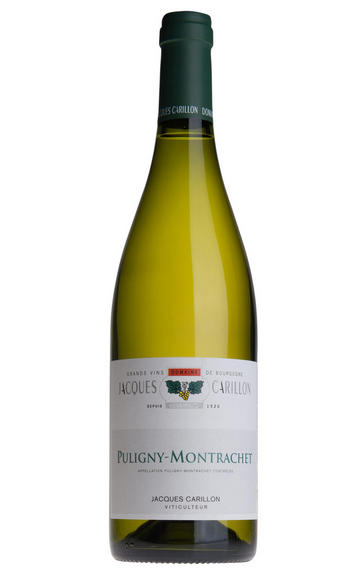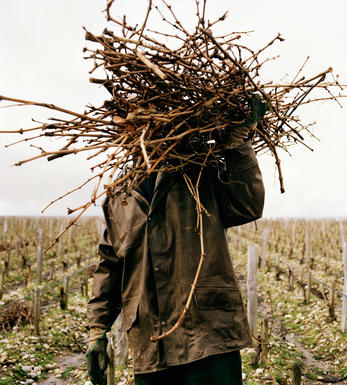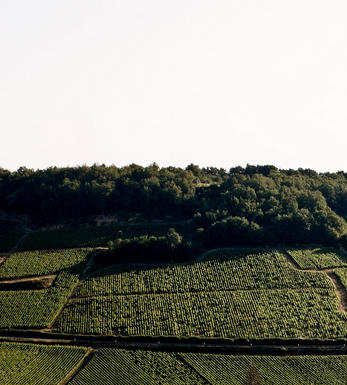
2009 Puligny-Montrachet, Domaine Louis Carillon

Critics reviews
(Allen Meadows - burghound.com - February 2011)
About this WINE

Louis Carillon
The first Carillon vigneron in Puligny, Jehan, has been traced back to 1520 although the winery logo only boasts 1632. The Carillon holdings were incorporated as Domaine Louis Carillon et fils in 1981. This does not feel like a superstar domaine, but that is largely due to the modesty of the family and a sensible pricing policy. Nor, apart from a minute holding of Bienvenues-Bâtard-Montrachet, does it possess grand cru vineyards. Nonetheless this has been one of Puligny-Montrachet’s most consistently successful domaines over the past three decades. Tradition is the watchword here - hardly surprising for a family that can trace its viticultural genealogy back to 1632.
After the 2009 vintage Louis Carillon’s two sons, Jacques and François, have decided to go their own ways. Jacques will have the Referts, Champs Canet and Bienvenues-Batard-Montrachet, François the Combettes while the remaining vineyards will be split between them. The Chassagne-Montrachet 1er Cru Macherelles is currently being sold as village Chassagne because it is very young vines, while the red Chassagne-Montrachet is likely to be grubbed up and replanted as white.
The domaine consisted of 12 hectares of vineyards, the vast majority lying in Puligny Montrachet, with small parcels of vines in 5 Puligny 1ers Crus and a tiny holding in the Grand Cru Bienvenues-Bâtard-Montrachet. This domaine produced some of the most impressive wines in the village. Low yields, minimum racking and judicious use of new oak are what give the wines their intensity and discreet elegance.
The wines have a striking purity of fruit, are beautifully understated, and last and last. When compared to the strength in depth to be found in Meursault and Chassagne, there are relatively few producers in the first division in Puligny. Sauzet and Leflaive may have the aura, but the wines from Jacques Carillon and his brother François are their equal and often the best of their type.
Jasper Morris MW, author of the award-winning Inside Burgundy comprehensive handbook.

Puligny-Montrachet
Puligny was one of two villages (along with Chassagne) which gained permission in 1879 to hyphenate the name of its most famous vineyard, Montrachet, to its own.
The reputation of Puligny-Montrachet is based around its four Grands Crus. Montrachet labels often boast a noble, triumphant 'Le' in front of its name, lest you dare confuse it with any lesser wine. It has much to be proud of, with many considering Montrachet to be the greatest white wine in the world. At its best it has an intensity, complexity and elegance that make you wonder how such a wine could be made from mere grapes.
The luxurious and explosive Chevalier-Montrachet is not quite as deep, although it is probably the next best. Only marginally less impressive, and rather more consistent than Montrachet is the richly textured Bâtard-Montrachet (also shared with Chassagne). Bienvenues-Bâtard-Montrachet is equally good, with the focus on honeyed finesse and exquisite balance rather than richness.
These legendary wines are supported by a host of fabulous Premier Cru vineyards capable of reaching Grand Cru quality. Brimming with flavour and intensity, Le Cailleret and Les Pucelles (which both lie across the road from Le Montrachet) are prime candidates, along with Les Demoiselles, Les Combettes and Folatières.
Sandwiched between the larger Chassagne and Meursault, Puligny produces wines that are more striking than any in the Côte d’Or, portraying a floral elegance alongside a stylish, steely concentration. They are very different to Meursault: more refined and delicate, and less rich.
Village level Puligny-Montrachet from top growers can be very good indeed, but is all too often unexciting and disappointing. Grands Crus normally need at least eight years before they can be broached, and last for 20 or more. Premiers Crus should generally be enjoyed between five and 15 years of age; village wines from three to 10 years.
In theory, you can find red Puligny-Montrachet, but it scarcely exists anymore, and is rarely worth the price tag.

Chardonnay
Chardonnay is often seen as the king of white wine grapes and one of the most widely planted in the world It is suited to a wide variety of soils, though it excels in soils with a high limestone content as found in Champagne, Chablis, and the Côte D`Or.
Burgundy is Chardonnay's spiritual home and the best White Burgundies are dry, rich, honeyed wines with marvellous poise, elegance and balance. They are unquestionably the finest dry white wines in the world. Chardonnay plays a crucial role in the Champagne blend, providing structure and finesse, and is the sole grape in Blanc de Blancs.
It is quantitatively important in California and Australia, is widely planted in Chile and South Africa, and is the second most widely planted grape in New Zealand. In warm climates Chardonnay has a tendency to develop very high sugar levels during the final stages of ripening and this can occur at the expense of acidity. Late picking is a common problem and can result in blowsy and flabby wines that lack structure and definition.
Recently in the New World, we have seen a move towards more elegant, better- balanced and less oak-driven Chardonnays, and this is to be welcomed.


Buying options
Add to wishlist
Description
A notably ripe yet fresh nose of yellow orchard fruit and floral aromas leads to rich, full and naturally sweet medium-bodied flavors that culminate in a delicious, complex and moderately dry finish. This should offer several years of upside development.
(Allen Meadows - burghound.com - February 2011)
wine at a glance
Delivery and quality guarantee